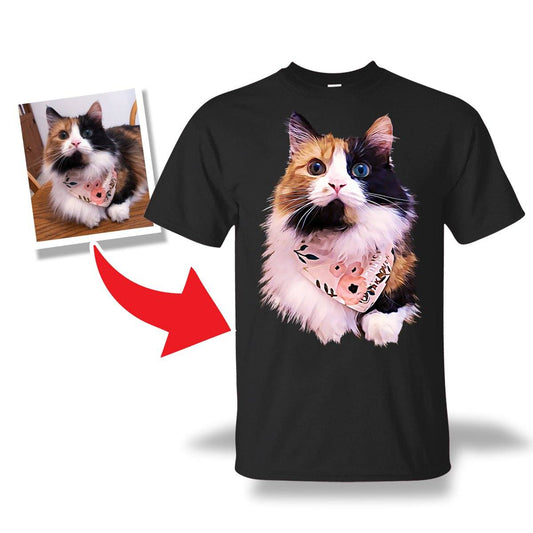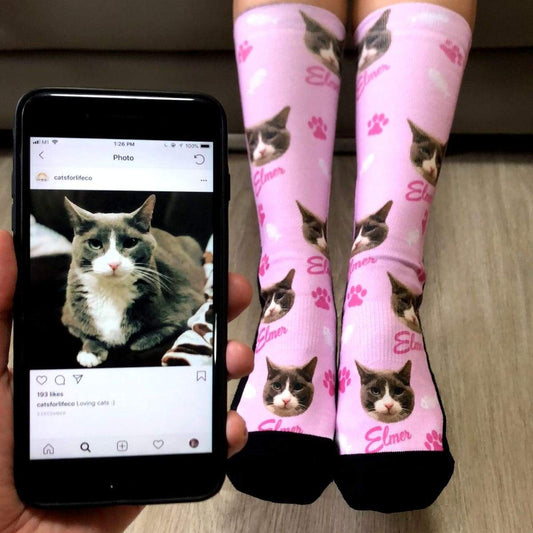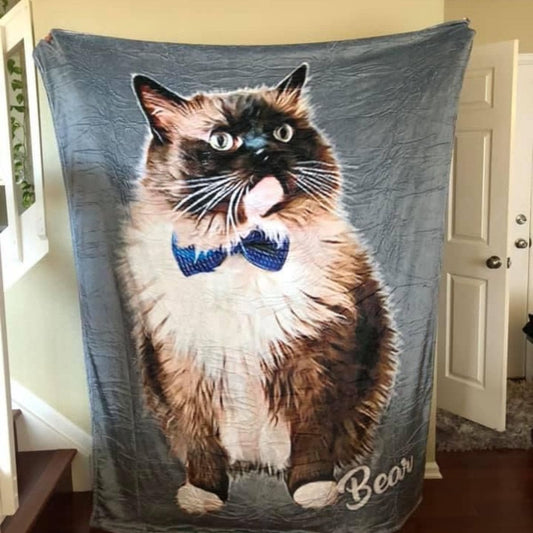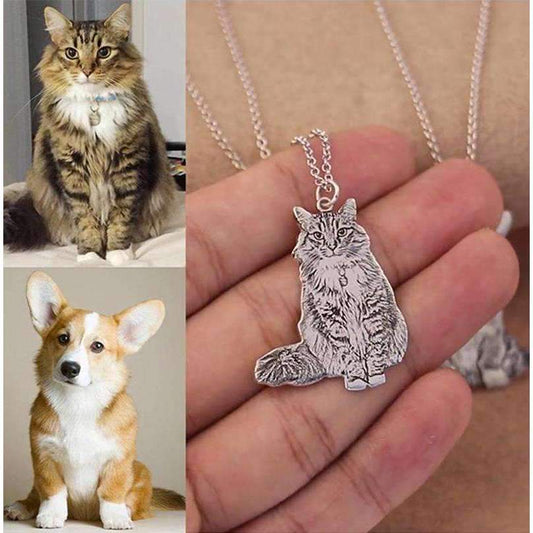Feline leukemia virus (FeLV) is a retrovirus that can cause a multitude of health issues in cats, ranging from cancer to blood disorders. Understanding the nature of the virus, its modes of transmission, and effective prevention and care strategies is crucial for cat owners to protect their beloved feline companions. This article delves into the essentials of FeLV, covering its basic characteristics, prevention techniques, diagnosis, and management, as well as the broader community and environmental implications.
Key Takeaways
- FeLV is a retrovirus that can lead to serious health problems in cats, including leukemia, and is primarily transmitted through close contact with infected cats.
- Vaccination against FeLV can significantly reduce the risk of infection, but maintaining an indoor lifestyle for cats remains the most effective prevention strategy.
- Diagnosis of FeLV involves specific tests that can detect the virus, and regular veterinary check-ups play a critical role in early detection and management.
- Upon a positive FeLV diagnosis, immediate and long-term care strategies, including supportive therapies, are essential to manage the condition and maintain quality of life.
- Public awareness and education, along with responsible shelter and rescue operations, are key to controlling the spread of FeLV and minimizing its impact on the cat population.
The Basics of Feline Leukemia Virus (FeLV)

Understanding the Virus Structure and Family
Feline leukemia virus (FeLV) is a member of the Retroviridae family, specifically within the Orthoretrovirinae subfamily and the Gammaretrovirus genus. It is characterized by a single-stranded RNA genome. The virus enters the host cell by fusing its envelope with the cell membrane, releasing its contents into the cytoplasm. This process initiates a critical phase where the viral RNA is reverse-transcribed into DNA, which then integrates into the host's genome, becoming a permanent part of the cell's genetic material.
FeLV is further classified into subgroups based on their properties and interactions. Here is a brief overview of the subgroups:
- FeLV-A: The parent virus, which is the most common and necessary for transmission.
- FeLV-B: Arises from recombination with endogenous FeLV or other retroviruses present in domestic cats.
- FeLV-C: Typically results from mutations in the FeLV-A envelope gene and is associated with severe anemia.
- FeLV-D and T: Less common, with specific pathogenic properties.
The integration of the virus into the host's genome means that once a cat is infected with FeLV, it has the potential to remain infected for life. This underscores the importance of prevention and early detection to manage the disease effectively.
Historical Prevalence and Current Statistics
The historical prevalence of Feline Leukemia Virus (FeLV) has been a subject of extensive study, revealing fluctuations over time. Statistical analyses have been crucial in understanding these trends, with methods ensuring data independence and accuracy. For instance, the mean annual FeLV p27 prevalence has varied significantly, ranging from 0% to 6.67%, while FeLV provirus prevalence has been observed from 0% to 33.3% in tissue samples.
The prevalence of FeLV has shown significant peaks and troughs during the study period from 2008 to 2021, indicating the dynamic nature of this virus in feline populations.
Recent studies have highlighted the absence of FeLV infection markers in certain populations, with a notable instance being the complete lack of FeLV detection in a sample of 298 community cats. This contrasts with the higher seroprevalence of FIV in the same group, emphasizing the need for continued surveillance and targeted prevention strategies.
| Year Range | FeLV p27 Prevalence | FeLV Provirus Prevalence in Blood | FeLV Provirus Prevalence in Tissue |
|---|---|---|---|
| 2008-2021 | 0% - 6.67% | 0% - 18.8% | 0% - 33.3% |
Understanding these statistics is vital for developing effective prevention and care protocols for cats at risk of FeLV.
Symptoms and Early Detection
Feline Leukemia Virus (FeLV) can be elusive in its early stages, often presenting no noticeable symptoms. However, as the virus progresses, cats may exhibit signs that should prompt concern and a visit to the veterinarian. Early detection is crucial for managing FeLV and can significantly impact the cat's quality of life.
Cats infected with FeLV may show a range of symptoms:
- Loss of appetite
- Weight loss
- Lethargy
- Fever
- Pale gums
- Enlarged lymph nodes
- Diarrhea
- Respiratory infections
- Anemia
- Cancer
Some cats may not show any symptoms, while others may experience severe symptoms. It's important to note that these symptoms can also be indicative of other health issues.
Recognizing the signs of FeLV is essential for timely intervention. While some symptoms may seem mild, they can escalate quickly, and a veterinarian's insight is invaluable in distinguishing FeLV from other conditions.
Prevention Strategies for Feline Leukemia

Vaccination and Its Efficacy
Vaccinations play a crucial role in protecting cats from Feline Leukemia Virus (FeLV). These preventive measures are essential for maintaining the health of individual cats and the broader feline population. When a cat is vaccinated, it receives a small amount of the disease-causing organism, which is either killed or weakened to ensure it does not cause illness. This exposure prompts the cat's immune system to produce antibodies, equipping it to combat the actual disease if encountered.
Vaccinations are typically administered in a series of injections over the cat's lifetime. Some vaccines, like FeLV, may require boosters every 1 to 3 years to maintain immunity.
While vaccinations are generally safe, mild side effects such as pain or swelling at the injection site, mild fever, decreased appetite, and lethargy can occur. It is important to monitor cats after vaccination for any signs of more serious reactions and consult a veterinarian if concerns arise.
The table below outlines the recommended frequency for core and non-core vaccines in cats:
| Vaccine Type | Frequency |
|---|---|
| Core Vaccines (e.g., FVRCP, Rabies) | Every 1 to 3 Years |
| Non-Core Vaccines (e.g., FeLV) | As recommended by a veterinarian |
Indoor vs. Outdoor Cats: Assessing Risks
The decision to keep a cat indoors or allow outdoor access is a significant factor in the prevention of Feline Leukemia Virus (FeLV). Indoor cats are generally at a lower risk of contracting FeLV as they are less likely to come into contact with infected cats or environments. However, even indoor cats can be exposed to the virus through windows or doors, or if an infected cat is brought into the home.
For cats that enjoy the outdoors, alternatives such as leash walks, cat enclosures, or secure cat fencing can provide safe options. These methods allow cats to experience the outdoors while minimizing the risk of exposure to FeLV. It's also important to create a stress-free home environment that offers enrichment for your cat's well-being.
Spaying and neutering can play a crucial role in reducing the likelihood of transmission among cats, as it may decrease the chances of fighting, a common way FeLV spreads.
Understanding the history and lifestyle of your cat is essential in assessing their risk. Factors such as the cat's origin, whether there are other pets in the home, and the cat's behavior can influence their risk level. Regular veterinary check-ups and vaccinations are recommended, even for indoor cats, to ensure they are protected against various infectious diseases.
Integrating New Cats: Testing and Quarantine Protocols
When introducing a new cat to your home, especially in a multi-cat household, it's crucial to follow proper testing and quarantine protocols to ensure the health and safety of all pets involved. Begin with a thorough veterinary examination, including vaccinations and testing for FeLV/FIV, to confirm the new cat's health status.
To minimize stress and prevent potential conflicts, establish a 'safe room' for the new cat. This area should be equipped with all the cat care basics such as food, water, a litter box, and a scratching post. Use pheromone diffusers to create a calming environment and allow the new cat to acclimate at their own pace.
Here are the steps to follow:
- Set up a 'safe room' with essential resources.
- Use calming aids like pheromone diffusers.
- Gradually introduce the new cat to other household pets.
- Monitor interactions and adjust access as needed.
It's important to be patient during this process. Cats have their own unique personalities and may require different lengths of time to adjust to new surroundings and fellow pets.
Diagnosing FeLV in Cats

Available Testing Methods
To diagnose Feline Leukemia Virus (FeLV) in cats, veterinarians utilize a variety of testing methods. The most common in-house test detects the p27 protein, which is a component of the virus, and can yield results within 15 minutes. For a more comprehensive analysis, a reference laboratory can measure the DNA for provirus, indicating a definitive infection.
- In-house antigen test (p27 protein detection)
- Reference laboratory DNA test (provirus detection)
It is crucial to understand that a positive result in one test and a negative in another does not necessarily indicate a false result. Different tests measure different stages of the virus's presence.
Veterinarians may also conduct serological and molecular testing for other pathogens that can affect the diagnosis or health of the cat, such as FIV, CDV, FHV-1, FCV, FCoV, FPV, Bartonella spp., Chlamydophila felis, and Cytauxzoon spp. These tests are based on methods described in the respective literature and are essential for a comprehensive health assessment.
Interpreting Test Results
Interpreting the results of FeLV testing is crucial for determining the appropriate care for your cat. Negative test results are generally reliable, but it is important to retest in certain situations. For instance, if a cat has been recently exposed to high-risk situations, such as a cat fight resulting in a bite, a retest is recommended after 30 days for FeLV or 60 days for FIV.
Positive results, on the other hand, necessitate a confirmatory test at a reference lab to exclude the possibility of a false positive. It's essential to understand that cats with an initial positive result may transition to a regressive infection pattern within 16 weeks, which has different implications for management.
When interpreting different types of tests, it's important to note that in-house tests measure p27 protein, while reference lab tests look for provirus DNA. A positive provirus test indicates exposure to FeLV and suggests either a progressive or regressive infection pattern.
The interpretation of FeLV test results guides the subsequent steps in managing your cat's health and requires careful consideration of the type of infection indicated by the test.
The Role of Regular Veterinary Check-Ups
Regular veterinary check-ups are a cornerstone of maintaining the health of cats, especially those diagnosed with FeLV. These visits allow for early detection of any changes in health status and ensure that any necessary adjustments to treatment or care can be made promptly. During these check-ups, a veterinarian will conduct a thorough physical examination, assessing the cat's weight, temperature, heart rate, and overall appearance for signs of illness or discomfort.
Veterinary visits also provide an opportunity to discuss the cat's diet and exercise routine. High-quality cat food and treats are crucial for cat health, saving money in the long run. It's important to factor in vet expenses for routine care and emergencies, as well as budget for cat accessories. Regular exercise, tailored to the cat's breed and age, is essential for maintaining a healthy weight and overall well-being.
By adhering to a schedule of regular veterinary visits, cat owners can ensure their pets receive the best possible care. This proactive approach to health management is vital for cats with FeLV, as it can significantly impact their quality of life and longevity.
Managing a Positive FeLV Diagnosis

Immediate Steps After Diagnosis
Upon receiving a positive FeLV diagnosis, it's crucial to understand that this is not the end of the road for your cat. What many fail to realize is that a positive FeLV test does not need to equate to an immediate death sentence. In fact, with proper care and management, cats can continue to live fulfilling lives. Immediate steps should include confirming the diagnosis with a reference lab to rule out a false positive.
It's essential to assess and modify the cat's environment to reduce stress and prevent secondary infections. This includes creating a calm, safe space and considering the addition of therapies such as red light therapy, which has shown benefits in recovery.
The following list outlines the initial actions to take after a positive FeLV diagnosis:
- Confirm the diagnosis with a repeat test at a reference lab.
- Begin environmental modifications to support your cat's health.
- Monitor for behavioral changes and pain, as these can indicate improvements or the need for adjustments in care.
- Consult with your veterinarian about the addition of supportive therapies, such as steroids if inflammation is present.
Long-Term Care and Monitoring
Caring for a cat with FeLV requires a dedicated approach to ensure their well-being over time. Regular monitoring and adjustments to their care plan are essential. As cats with FeLV can experience a range of health issues, it's important to maintain a close relationship with your veterinarian to manage any arising complications.
Nutritional care is a cornerstone of long-term management. A balanced diet tailored to your cat's specific needs can help support their immune system. Regular wellness blood work and examinations are crucial for early detection of secondary conditions such as thyroid disease or diabetes.
Creating an enriched environment for your cat can also have a positive impact on their quality of life. This includes providing mental stimulation through toys and interaction, as well as a comfortable and stress-free living space.
Remember that cats with FeLV can live normal lives for extended periods of time. The median survival time is 2.5 years. After FeLV is confirmed, monitor for behavioral changes and assess for any signs of pain or discomfort regularly.
Supportive Therapies and Quality of Life Considerations
Supportive therapies for FeLV-positive cats are essential to enhance their quality of life and manage symptoms. Nutritional care is a cornerstone of supportive therapy, ensuring that the cat's dietary needs are met with appropriate supplements and a balanced diet. Environmental modifications can also play a crucial role in the recovery and comfort of a painful cat.
Creating an enriched environment for your cat can stimulate their senses and encourage physical activity, which is beneficial for their overall health. Consultation with a veterinarian is vital for determining the right combination of antibiotics, nutritional supplements, iron supplements, bone marrow stimulants, and possibly steroids.
While the average projected lifespan for FeLV-positive cats is approximately 2 to 3 years, proactive and comprehensive care can make these years more comfortable and fulfilling for your feline friend.
Community and Environmental Impact

Controlling the Spread of FeLV
Controlling the spread of Feline Leukemia Virus (FeLV) is essential to protect both domestic and wild feline populations. Regular screening and isolation of infected cats are key measures to prevent transmission. Since FeLV is primarily spread through saliva, it's important to prevent cats from sharing food bowls and grooming each other when possible.
- Ensure separate feeding stations or use micro-chip feeders to avoid shared food bowls.
- Use common disinfectants to inactivate the virus, as FeLV does not survive long outside the host.
- Maintain strict hygiene by promptly scooping litter boxes and performing regular cleanings.
Early intervention and management are critical in improving outcomes for FeLV-positive cats. Starting treatment as soon as possible can significantly enhance a cat's quality of life and limit the spread of the virus.
Vaccination remains a cornerstone in FeLV prevention strategies, alongside educating cat owners about the risks and transmission pathways. By implementing these measures, we can work towards a healthier feline community and mitigate the impact on endangered species, such as the Iberian lynx, which has faced outbreaks in the past.
Shelter and Rescue Considerations
Shelters and rescue organizations play a crucial role in managing FeLV in the feline population. Proper protocols and environments are essential to prevent the spread of the virus among cats in their care. Shelters should ensure that cats have safe and secure resting places, and that resources such as litter boxes, feeding stations, and water bowls are plentiful and separated to reduce stress and potential transmission.
It is imperative for shelters to have stringent infectious disease management practices in place, including the choice of disinfectants and isolation procedures for FeLV-positive cats.
Additionally, shelters must consider the integration of new cats carefully, with mandatory testing for FeLV and quarantine protocols to protect both the newcomer and the existing population. Education on FeLV should be provided to potential adopters, emphasizing the importance of vaccination and responsible pet ownership.
- Safe and secure resting places
- Multiple, separated resources
- Isolation and quarantine protocols
- Education for adopters
Public Awareness and Education
Raising public awareness about FeLV is crucial for both preventing the spread of the virus and ensuring that infected cats receive the care they need. Educational initiatives and resources are key to informing the community about the risks and management of Feline Leukemia Virus.
Our approach includes a comprehensive plan addressing various aspects of feline health and lifestyle that may influence FeLV transmission. This includes:
- Dietary choices
- Prevention of transmission of zoonotic illnesses
- Disease education
- Preventative/wellness protocols
It is essential to maintain a well-informed community to foster responsible pet ownership and to reduce the stigma associated with FeLV.
Collaboration with organizations such as ABCD Europe helps to disseminate the latest scientific developments and best practices in feline health. Their commitment to communication and education is reflected in their offerings, which range from fact sheets to detailed guidelines on vaccination and disease prevention.
Conclusion
In summary, understanding and managing Feline Leukemia Virus (FeLV) is crucial for the well-being of our feline companions. While the FeLV vaccine provides a layer of protection, it is not foolproof, and the best preventive measure remains keeping cats indoors to minimize exposure to infected individuals. For cats diagnosed with FeLV, early detection and intervention are key to managing the disease and ensuring a better quality of life. By staying informed about the latest guidelines and research, such as the 2020 AAFP Feline Retrovirus Testing and Management Guidelines, cat owners and veterinarians can work together to provide the best care for cats affected by this virus. Remember, a combination of preventive healthcare, regular medical check-ups, and a loving home environment can make a significant difference in the lives of cats with FeLV.
Frequently Asked Questions
What is Feline Leukemia Virus (FeLV)?
Feline leukemia virus (FeLV) is a retrovirus that infects cats, leading to a weakened immune system. It can cause various conditions, including leukemia, lymphoma, anemia, and immune deficiency, making the cat susceptible to other infections.
How do cats contract FeLV?
Cats can contract FeLV through close contact with infected cats. The virus is commonly spread through saliva during grooming, sharing food and water dishes, and bites. It can also be transmitted from mother to kittens during pregnancy or nursing.
Can FeLV be prevented with vaccination?
Vaccination can help prevent FeLV, but it does not provide absolute immunity. Keeping cats indoors and away from infected cats is the best prevention strategy. Regular testing and vaccinations are recommended, especially for cats with outdoor access or those in multi-cat households.
What are the symptoms of FeLV in cats?
Symptoms of FeLV can include lethargy, weight loss, poor coat condition, fever, diarrhea, and respiratory infections. Some cats may show no signs initially, as the virus can be latent for some time before causing illness.
What should I do if my cat is diagnosed with FeLV?
If your cat is diagnosed with FeLV, you should work with your veterinarian to develop a management plan. This may include supportive therapies, regular health monitoring, and measures to prevent secondary infections. Keeping the cat indoors and minimizing stress are also important.
Is there a cure for FeLV?
There is currently no cure for FeLV. Treatment focuses on managing symptoms, preventing secondary infections, and maintaining the best possible quality of life. Research is ongoing to find more effective treatments and management strategies for FeLV-infected cats.




